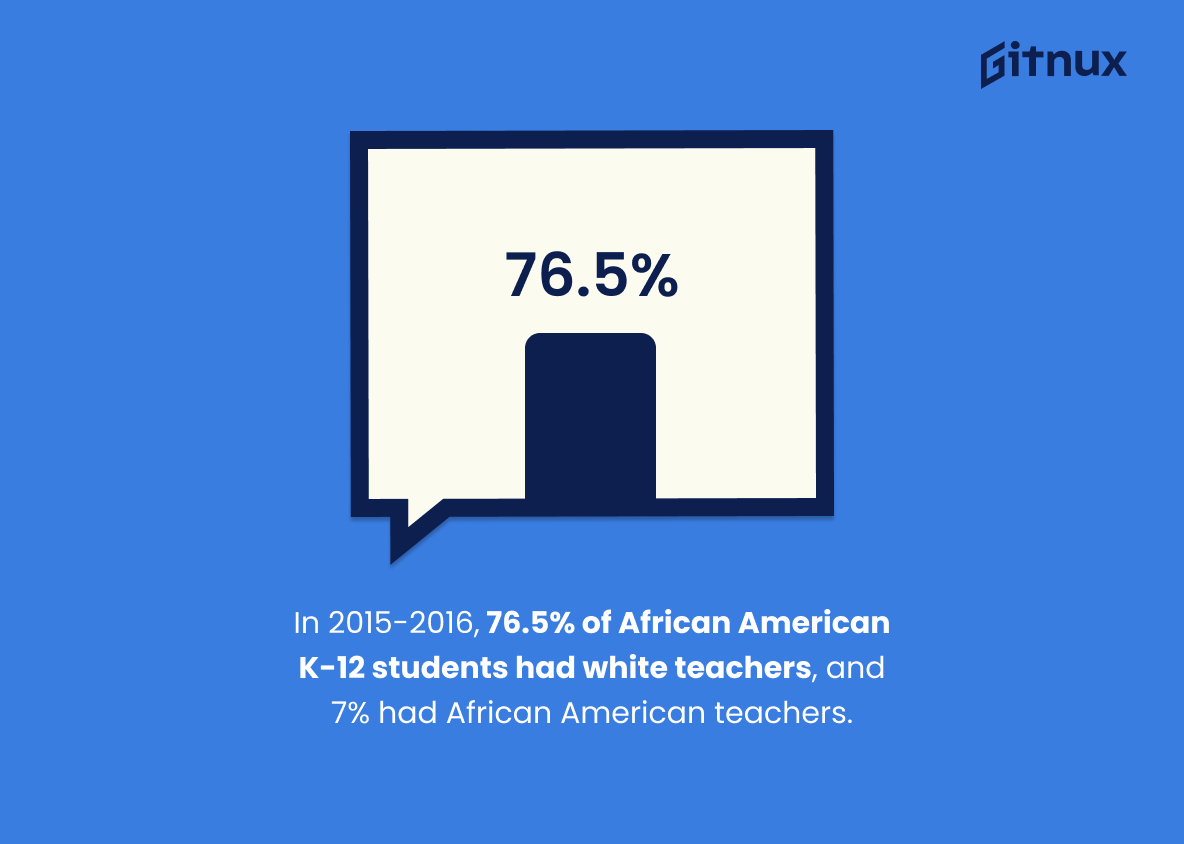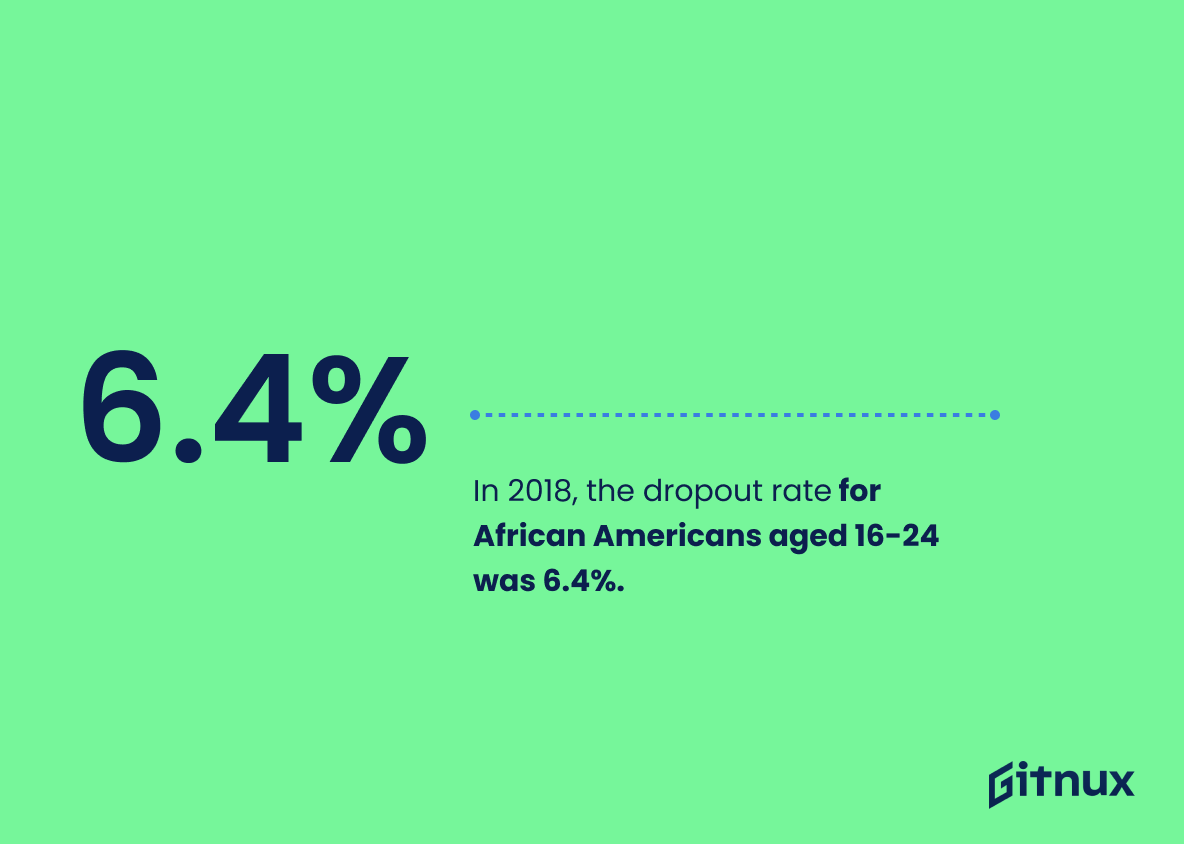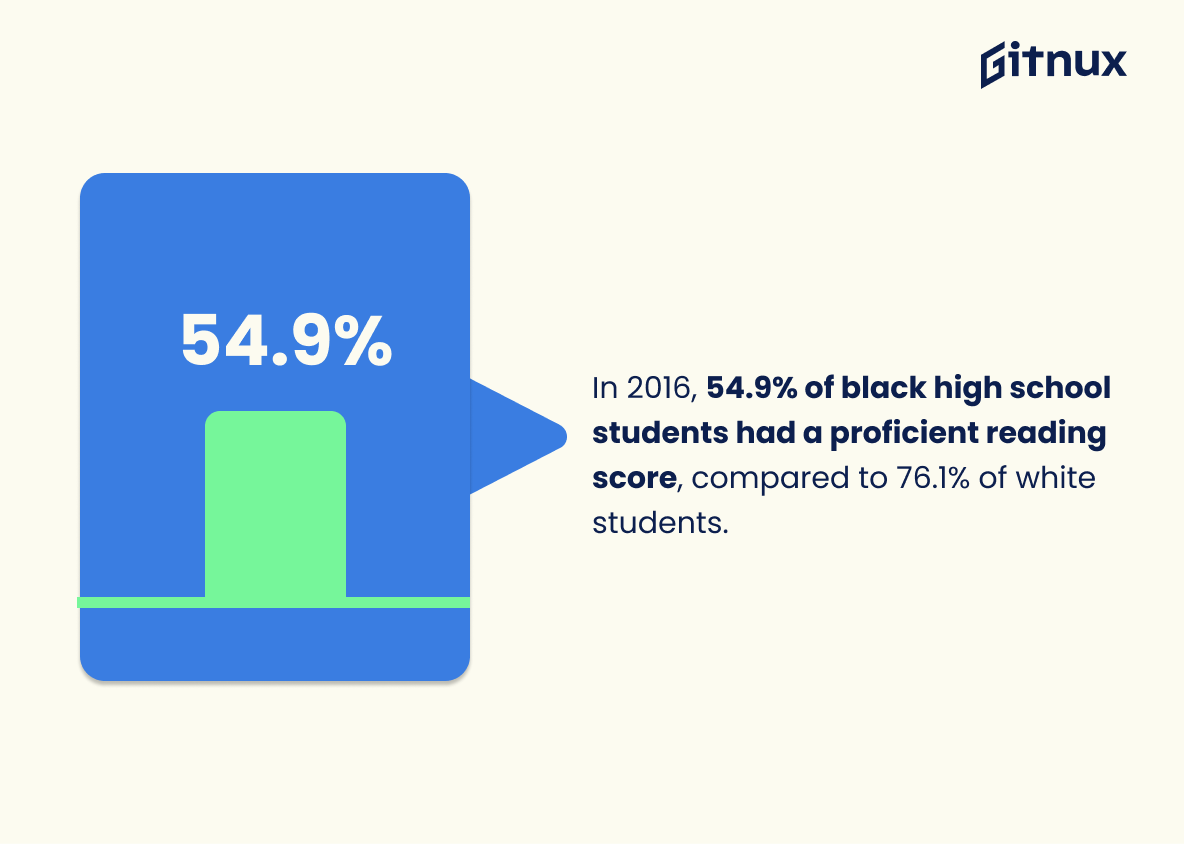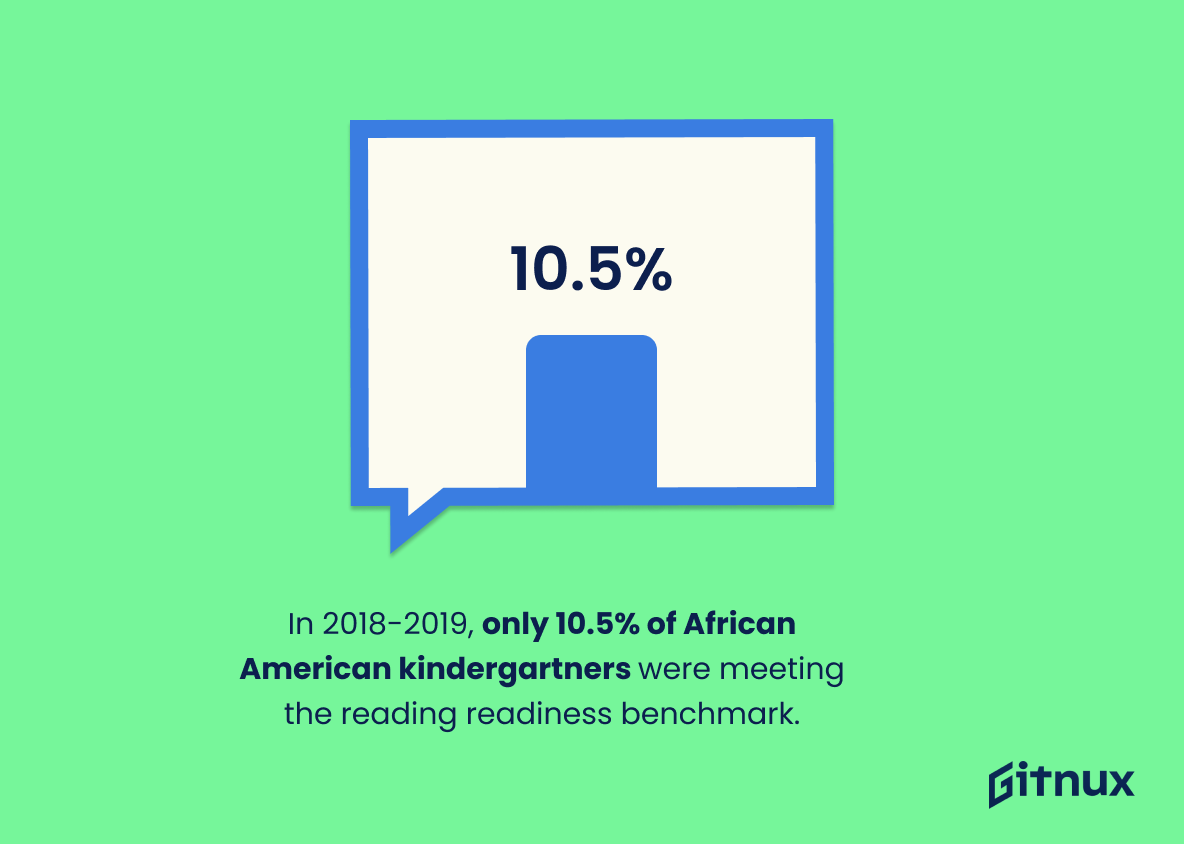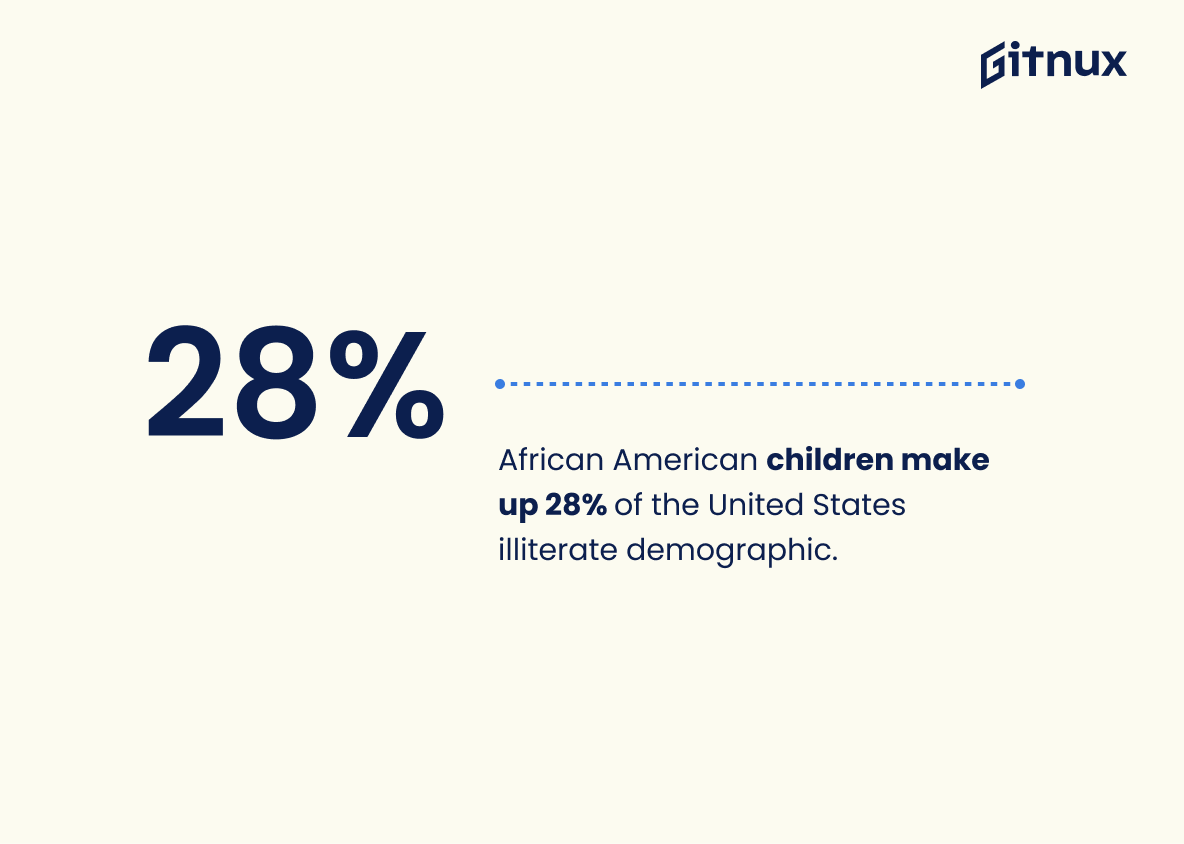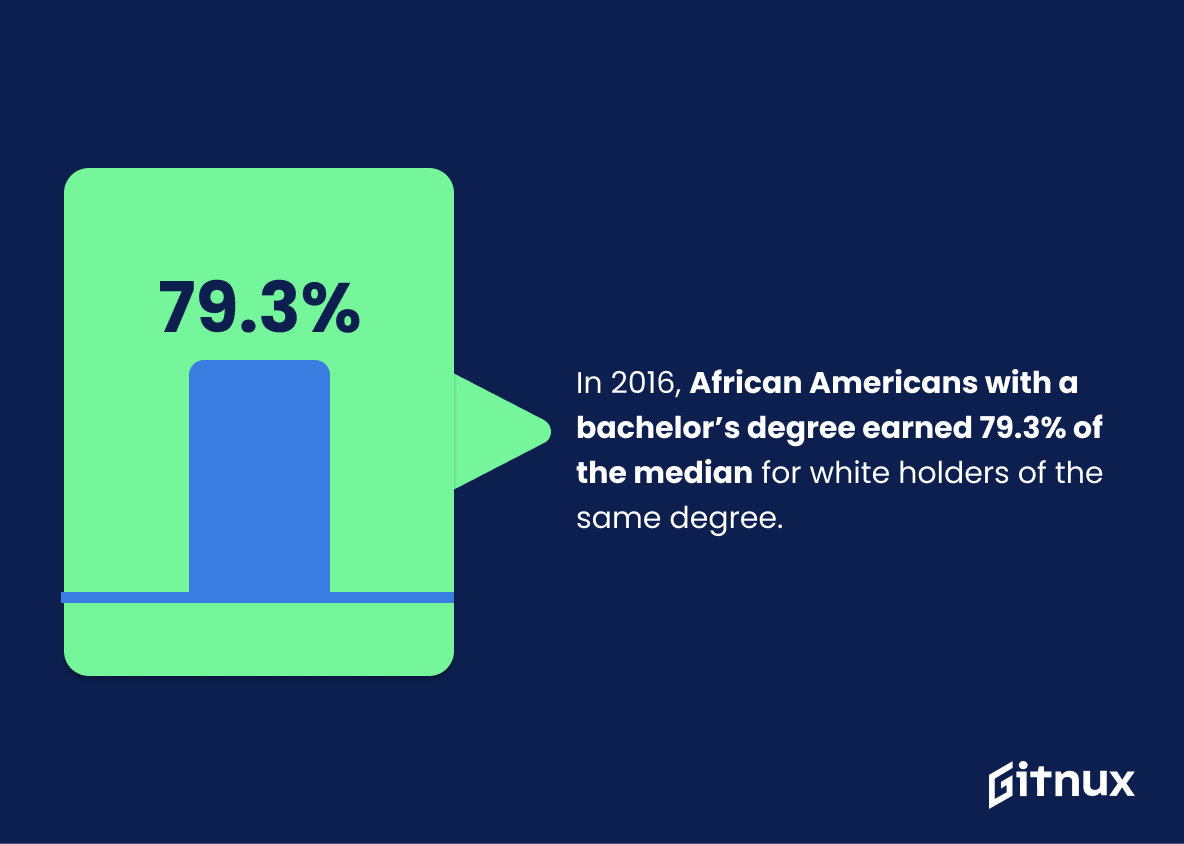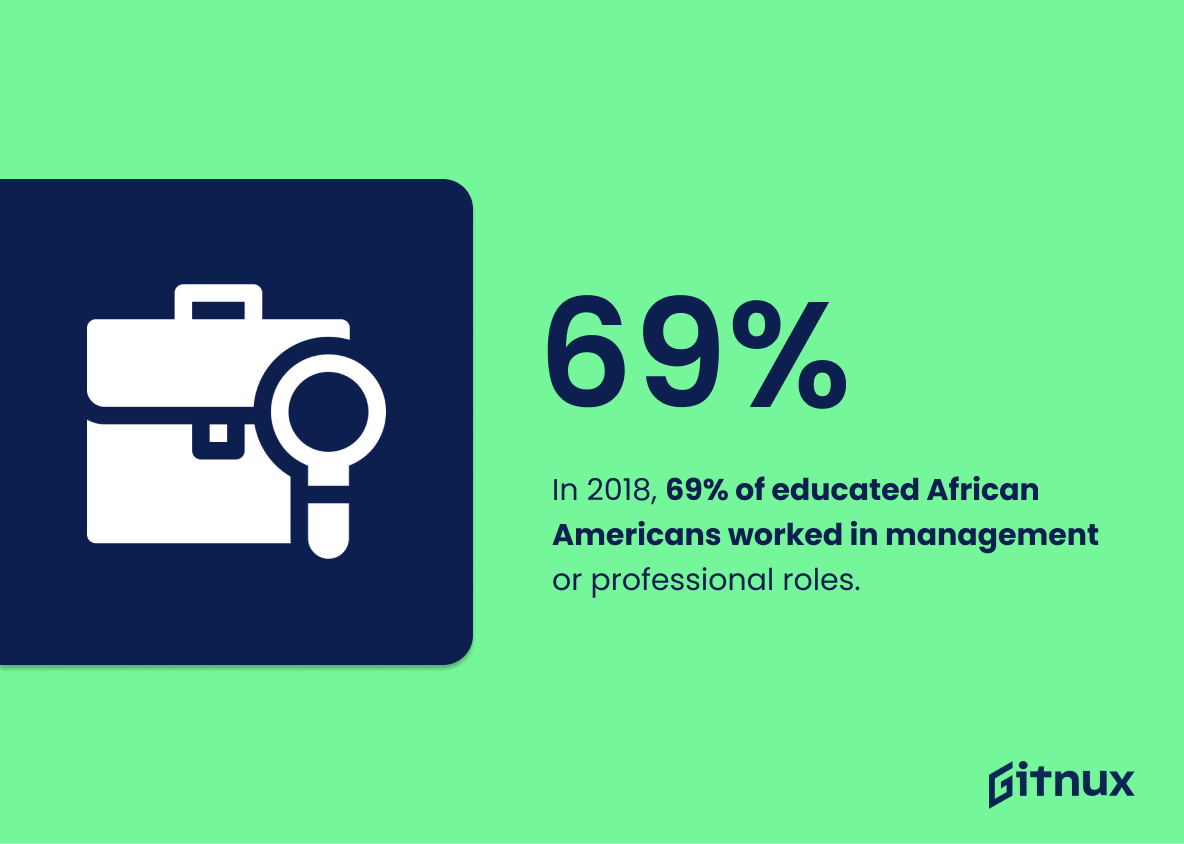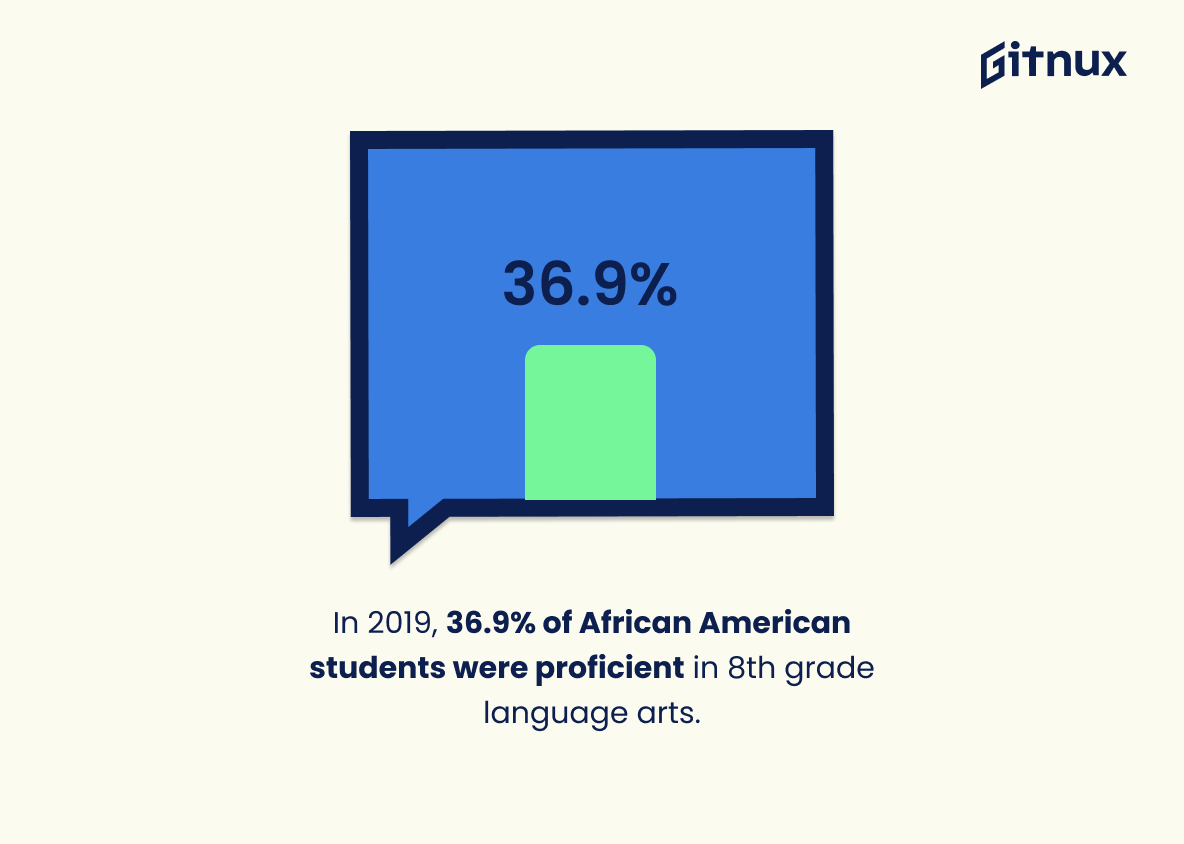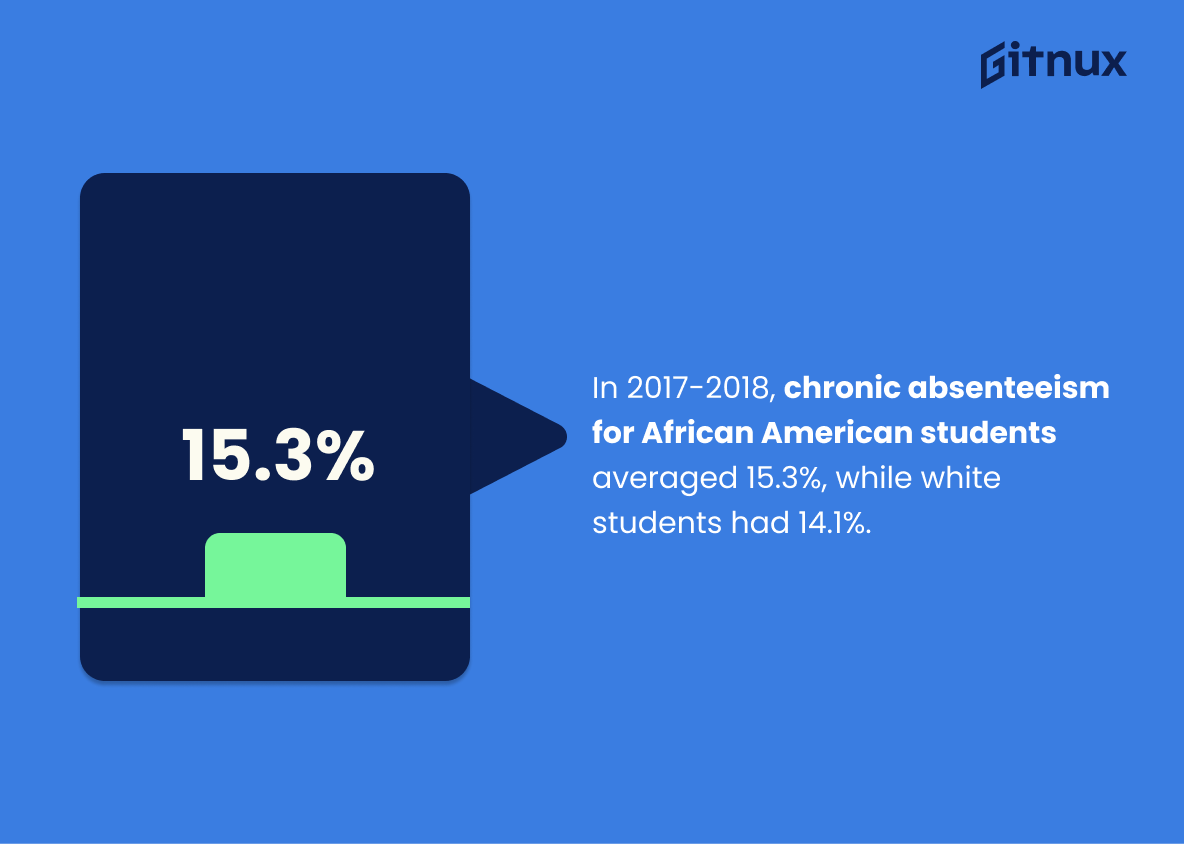African American literacy statistics paint a complex picture of educational disparities in the United States. From high school graduation rates to college enrollment and reading proficiency, African Americans are often at a disadvantage when it comes to education. This blog post will explore 20 different statistics related to African American literacy, including dropout rates, access to reading materials in the home environment, and differences between white students’ academic performance compared with that of their black peers. We’ll also look at how these numbers have changed over time and what they mean for our society today. By understanding these facts about African American literacy we can better understand why there is still an achievement gap between whites and blacks in America’s schools – as well as what steps need to be taken towards closing this gap once and for all.
The statistic that 84.2% of African Americans aged 25 and older have a high school diploma or higher is a testament to the hard work and dedication of the African American community. It is a sign of progress and a reminder of the importance of education in the African American community. This statistic is a powerful reminder of the strides African Americans have made in the pursuit of literacy and educational attainment.
In 2020, the percentage of black adults (18-24 years) enrolled in college was 34.2%.
The statistic that in 2020, 34.2% of black adults (18-24 years) were enrolled in college is a testament to the progress that African Americans have made in terms of literacy. It shows that African Americans are taking advantage of educational opportunities and are striving to better themselves and their communities. This statistic is a reminder that African Americans are capable of achieving success and that literacy is an important part of that success.
African American Literacy Statistics Overview
In 2019, the African American literacy rate was 87.1%, compared to 90.1% for whites.
This statistic is a stark reminder of the disparities that still exist between African Americans and whites in terms of literacy. It highlights the need for more resources and support to be directed towards African American communities in order to close the literacy gap and ensure that everyone has access to the same educational opportunities.
In 2015-2016, 76.5% of African American students in K-12 were taught by white teachers, and only 7% had African American teachers.
This statistic is a stark reminder of the lack of diversity in the teaching profession. It highlights the fact that African American students are not being taught by teachers who can relate to their experiences and backgrounds, which can have a negative impact on their literacy levels. Furthermore, it suggests that African American students are not being exposed to the same level of cultural understanding and appreciation as their white peers, which can lead to a lack of motivation and engagement in the classroom.
In 2018, the dropout rate for African Americans aged 16-24 was 6.4%.
The dropout rate for African Americans aged 16-24 in 2018 paints a concerning picture of the literacy levels of this demographic. It suggests that a significant portion of African Americans in this age group are not receiving the education they need to succeed in life. This statistic is a reminder of the importance of providing African Americans with the resources and support they need to stay in school and achieve their educational goals.
In 2016, 54.9% of black high school students had a proficient reading score, compared to 76.1% of white students.
This statistic serves as a stark reminder of the disparities in literacy rates between African American and white students. It highlights the need for greater investment in educational resources for African American students to ensure they have the same access to literacy as their white peers.
In 2017, 26.1% of black students were proficient in 4th grade reading, compared to 46.7% of white students.
This statistic serves as a stark reminder of the disparities in literacy rates between African American and white students. It highlights the need for greater investment in educational resources for African American students to ensure they have the same opportunities to succeed as their white peers.
In 2018, around 35% of African American 4-year-old children were enrolled in state-funded preschool programs.
This statistic is a powerful indicator of the progress being made in providing African American children with the educational resources they need to succeed. It shows that a significant portion of African American 4-year-olds are receiving the early education that can help them develop the literacy skills they need to thrive in school and beyond. This statistic is a testament to the importance of investing in early childhood education for all children, regardless of race.
In 2018-2019, only 10.5% of African American kindergartners were meeting the reading readiness benchmark.
This statistic is a stark reminder of the disparities in literacy rates between African American kindergartners and their peers. It highlights the need for more resources and support to ensure that African American children have the same access to literacy education as their peers. It is a call to action to bridge the gap in literacy rates between African American children and their peers.
African American children make up 28% of the United States illiterate demographic.
This statistic is a stark reminder of the disparities that exist in literacy rates between African American children and other demographics in the United States. It highlights the need for increased access to educational resources and opportunities for African American children in order to ensure that they have the same opportunities to succeed as their peers.
In 2016, African Americans with a bachelor’s degree earned 79.3% of the median for white holders of the same degree.
This statistic is a powerful indicator of the disparities that still exist between African Americans and white Americans in terms of educational attainment and economic success. It highlights the fact that, despite having the same level of education, African Americans are still not receiving the same level of economic rewards as their white counterparts. This is an important issue to consider when discussing African American literacy statistics, as it demonstrates the need for further efforts to close the educational and economic gaps between African Americans and white Americans.
Of the African American adults who earned a bachelor’s degree or higher, 23.1% happened between 2008 and 2017.
This statistic is a powerful indicator of the progress made in African American literacy over the past decade. It shows that, despite the many challenges faced by African Americans, there has been a significant increase in the number of African Americans who have earned a bachelor’s degree or higher. This is a testament to the hard work and dedication of African Americans to improve their educational attainment and literacy levels. It is also a reminder that there is still much work to be done to ensure that all African Americans have access to the same educational opportunities.
In 2018, 69% of employed African Americans with a bachelor’s degree or higher worked in management, professional, or related occupations.
This statistic is a testament to the hard work and dedication of African Americans in the workforce. It shows that despite the challenges they face, they are still able to achieve success in their professional lives. This statistic is a reminder that African Americans are capable of achieving great things and should be given the same opportunities as everyone else. It also serves as a reminder that African Americans should be given the same respect and recognition for their accomplishments as any other group. This statistic is an important part of the conversation about African American literacy statistics, as it shows that African Americans are capable of achieving success in the professional world.
In 2019, 36.9% of African American students were proficient in 8th grade language arts.
This statistic is a powerful indicator of the progress being made in African American literacy. It shows that despite the challenges faced by African American students, they are still achieving success in language arts. This is an encouraging sign that African American students are being given the resources and support they need to succeed in school.
In 2017, only 31.9% of African American students, aged 3 years or older, attended advanced or gifted classes, compared to 48.6% of white students.
This statistic is a stark reminder of the disparities that exist between African American students and their white counterparts when it comes to access to advanced or gifted classes. It highlights the need for more equitable educational opportunities for African American students, so that they can reach their full potential and have the same opportunities as their white peers.
In 2017-2018, the national average of chronic absenteeism for African American students was 15.3%, compared to 14.1% for white students.
This statistic is a stark reminder of the disparities that exist between African American students and white students in terms of chronic absenteeism. It highlights the need for greater attention to be paid to the educational needs of African American students, and the importance of addressing the underlying causes of this disparity.
In 2016, 35.9% of African American students aged 25-29 had an associate degree or higher, compared to 60.6% of white students.
This statistic serves as a stark reminder of the disparities in educational attainment between African American and white students. It highlights the need for greater investment in educational opportunities for African American students, as well as the need to address the systemic racism that continues to impede their progress.
In 2018, only 70% of African American students graduated high school within four years, compared to 89% of white students.
This statistic is a stark reminder of the disparities that exist in educational opportunities for African American students. It highlights the need for greater investment in resources and support for African American students to ensure they have the same access to educational opportunities as their white peers. It also serves as a call to action to address the systemic racism that has created and perpetuated these disparities.
In 2017, 61.6% of African American children aged 6-8 years had access to reading materials in their homes compared to 78.8% of white children.
This statistic is a powerful indicator of the disparities in access to reading materials between African American and white children. It highlights the need for greater efforts to ensure that all children, regardless of race, have access to the resources they need to develop literacy skills. This statistic is an important reminder that African American children are not receiving the same level of support as their white peers when it comes to reading materials, and that this inequality must be addressed.
African American adults (age 16 and over) living with a low literacy skills have not significantly declined since 1992.
This statistic is a stark reminder that African American adults living with low literacy skills have not seen any improvement in the last two decades. It is a sign that the efforts to improve literacy among African Americans have not been successful, and that more needs to be done to ensure that all African Americans have access to the resources and education they need to improve their literacy skills.
Conclusion
The statistics presented in this blog post demonstrate the disparities between African American and white literacy rates. While 84.2% of African Americans aged 25 and older have a high school diploma or higher, only 70% graduated within four years compared to 89% of whites. Additionally, while 34.2% of black adults (18-24 years) were enrolled in college in 2020, only 26.1 % were proficient readers at 4th grade level compared to 46.7 % for whites; similarly 54.9 % had a proficient reading score at high school level compared to 76 .1%. Furthermore, 35 percent of African American 4 year old children are enrolled in state funded preschool programs but 10 .5 percent meet the reading readiness benchmark as opposed to 28 percent who make up the United States illiterate demographic with low literacy skills that has not significantly declined since 1992.. These figures highlight how much work needs to be done towards closing these gaps so that all students can benefit from equal access and opportunities when it comes to education regardless of race or ethnicity
References
0. – https://www.nces.ed.gov
1. – https://www.files.eric.ed.gov
2. – https://www.www.bls.gov
3. – https://www.www.census.gov
4. – https://www.tcf.org
5. – https://www.www.proliteracy.org
6. – https://www.www.edweek.org
7. – https://www.www.childtrends.org

